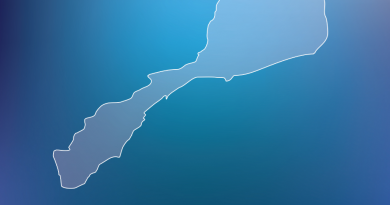Canada confirms plan to replace submarine fleet at NATO summit

Canada definitely plans to move forward with the purchase of new submarines, the federal government announced on the margins of the NATO Summit on Wednesday.
Up to now, the government has spoken only about the possibility of replacing the aging Victoria-class boats. But in the face of mounting criticism of Canada’s defence spending by allies — notably the United States — Ottawa has given the proposal the green light.
A senior government official, speaking on background, said they could not confirm how much the plan will cost, how many boats will be purchased or when they will arrive.
The submarine construction program will be separate from the National Shipbuilding Strategy because no shipyards in Canada currently have the capacity or technology to build sophisticated sub-surface vessels.
Discussions with manufacturers
Defence Minister Bill Blair announced Wednesday that Canada “is taking the first step towards the procurement of up to 12 conventionally-powered, under-ice capable submarines.”
He said the federal government is formally launching the process to find out what submarine builders can offer.
“Through the Canadian Patrol Submarine Project (CPSP), Canada will acquire a larger, modernized submarine fleet to enable the Royal Canadian Navy to covertly detect and deter maritime threats, control our maritime approaches, project power and striking capability further from our shores, and project a persistent deterrent on all three coasts,” Blair said in a media statement.

The Department of National Defence is in the process of meeting with manufacturers and potential partners, Blair added.
“A formal Request for Information (RFI) will be posted in fall 2024 to gain further information on the procurement, construction, delivery and operational capabilities of potential bidders who can build submarines for Canada,” the minister said.
“This RFI will also seek to gain information which will enable the establishment of a submarine sustainment capability in Canada.”
Exploring submarine partnership
Germany and Norway have pitched Canada on the idea of becoming part of their joint submarine program, which is expected to begin delivering boats by 2026.
On Wednesday, Blair signed a letter of intent to establish a trilateral maritime partnership with those two countries. But a spokesperson for the minister said it does not commit Canada to joining their submarine partnership.
South Korea is also interested and has held talks with Canadian officials about buying submarines and setting up a sustainment facility in Canada, a senior defence source said.
Sweden also has reportedly expressed interest.
Timing questioned
The Liberal government’s recent defence policy, released last spring, promised to “explore options” for new submarines. But since the policy was released, both Blair and Prime Minister Justin Trudeau have insisted that buying new submarines is not a matter of if but of when, and how many.
A defence expert was sceptical about both the announcement and the timing of the initiative.
“If they’re not announcing new money, then this is really a very incremental step forward,” said Dave Perry, president of the Canadian Global Affairs Institute.
“It’s a good one. We need to buy new submarines. If they’re talking about getting up to 12, that’s great. An RFI in the fall is a pretty incremental step.
“What that project needs is cash and government approval to move into a contract, and quickly.”
Canada continues to fail on NATO defence spending
Today’s announcement could be seen as an attempt by the government to blunt criticism of Canada’s continued failure to meet NATO’s defence spending benchmark of two per cent of GDP.
Canada currently spends 1.37 per cent of its GDP on defence. The new defence policy forecasts spending will rise to 1.76 per cent by the end of the decade.
It’s unlikely the submarine program will have an impact on the calculation because the federal government has no idea how much it will spend on the boats, or when.
Canada bought its current fleet of four submarines second-hand from the British in the late 1990s. The Department of National Defence spent hundreds of millions of dollars to bring them up to Canadian standards and it took a number of years to work out all the glitches.
Related stories from around the North:
Canada: Canada pledges billions for defence, falls short of NATO’s 2%, CBC News
Denmark: Denmark’s Arctic, North Atlantic focus: Canada among new defence attaché posts, Eye on the Arctic
Finland: US, Norwegian forces in Lapland for rapid reinforcement exercise, The Independent Barents Observer
Norway: Oslo looks to Brussels for strengthened security and defence, CBC News
Russia:Russia to begin artillery firing near Norway’s Grense Jakobselv, The Independent Barents Observer
Sweden: Biden says NATO now stronger than ever with Sweden and Finland, Radio Sweden
United States: White House releases U.S. Arctic strategy implementation plan, Eye on the Arctic



